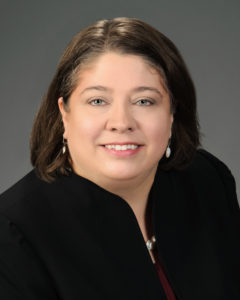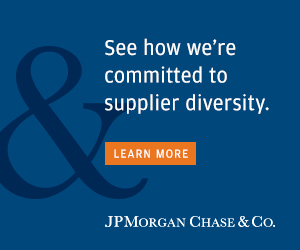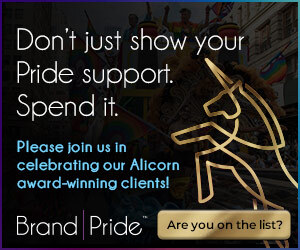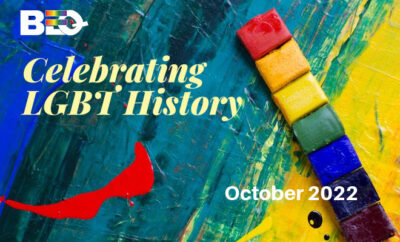
Corporate
Rethinking Supplier Diversity with UPS’s Kris Oswold
By Melissa Lowery
When you’re in the business of producing a magazine, you’re always on the lookout for interesting people, innovative ideas and unique perspectives. When you find all three in one place, it’s a very good day.
One very good day happened a few weeks ago when BEQ Pride Publisher Robin Dillard read a post on Longitudes, the official UPS blog. She sent me the link with the note, “We need to hear more from this woman.”
Titled “Are we doing enough? An insider’s view of business inclusion”, the post was written by Kris Oswold, Director of Supplier Diversity at UPS.
Oswold worked at UPS for 28 years before becoming Director of Supplier Diversity. During that time, she provided support to almost every part of the business, ran operations and designed processes from billing to shipping — and everything in between. After two years in the supplier diversity role, Oswold was reflecting on her journey and felt like she needed to speak up about a side of supplier diversity we don’t talk about very often – at least in public:
If we’re looking at today’s supplier diversity efforts objectively, can we truly say that we are doing enough to move the needle toward economic equality?
Honest internal reflection is never easy but it is almost always valuable. After nearly two years of conversations, meetings, strategy sessions, conferences and reports, Oswold found a disconnect between the potential competitive advantage of working with diverse suppliers and how supplier diversity is viewed in many organizations if it exists at all.
“Simply valuing diversity and inclusion is not enough to drive organizational change — at least not at the pace we want to move,” she wrote. “We should celebrate achievements, of course. But rather than claim victory, we should use such progress as fuel for innovation and as confidence to expect even more of ourselves.”
It’s a call to action, but we wondered what action Oswold envisioned. What, in her opinion, needs to happen to increase the pace toward economic equality? A query to the UPS corporate communications team led to a conversation with Oswold that proved rich with ideas to challenge the status quo and envision a dynamic future for inclusive supply chains.
Rethinking the Conversation
In her Longitudes post, Oswold wrote, “To truly drive toward economic equality, supplier diversity can’t feel like a secret tucked away in the procurement function. It has to hit the main stage.” This isn’t a new idea – we often hear that we need to engage stakeholders and get that C-suite buy-in. But Oswold’s point is that we need to look beyond the C-suite and the procurement team. We need to look at those groups – internal and external – who are not yet part of the conversation and figure out how to reach them.

Kris Oswold | UPS
BEQ Pride: Let’s talk about your vision for supplier diversity in the future, the supplier ecosystem, not necessarily at UPS but looking at the broader space. What does supplier diversity need to be in five or ten years? What trends are you seeing and saying “This is where we need to be in 2025 or 2030”?
Oswold: While I wish I could see the future, I do think there are some significant areas we need to get on top of to drive supplier diversity, areas where I think we can be more effective and make bigger changes. I’ll start with the big thing: broadening the conversation.
I think if I were to point to one thing, it’s that we need to broaden the group of people we talk to, the group of people that we engage and the group of people that understand the value the diverse businesses bring to our organizations.
You know, one of the things I recognized very early on in coming into this role is that I’d come to events and see the same people everywhere. We’re all committed to this, that’s why we go to these events, but I think what’s more important than talking to the same people is broadening the conversation to new people both internally and externally. It’s got to get beyond the CEO, and the procurement department; it’s got to penetrate that middle of the organization so that all stakeholders understand the business value and the changes that are needed. We also have to penetrate a broader and wider audience of suppliers and look at industries and events differently so we’re engaging new people every time we reach out.
The big question for me is, how do we do that? How do we bring in groups of people who are not already a part of this network? It’s great to have supplier diversity as it exists today, it helps us build relationships and develop our suppliers. I value it tremendously, but I think to achieve a faster pace, we’ve got to widen the audience.
BEQ Pride: So are you saying in five years’ time, we need to see supplier diversity be more prevalent throughout the enterprise?
Oswold: Oh, without a doubt! I will tell you, we’ve had some great responses internally and we’re on a journey like everybody else. We’re not at the end of our journey but the reactions I’ve had internally, recently, I’ve been really pleased with and those reactions help me see even more opportunities and even more that we can do.
It’s also about broadening externally. It’s growing this network — the network of suppliers, the network of corporations. There are some really impressive companies that have been the bedrock for supplier diversity, and they are fantastic. We need them and I have learned from them. The challenge is that there’s a whole suite of corporations that aren’t at the table yet. How do we identify them? How do we help them understand how important it is? How do we bring them in? One way is through more robust Tier Two programs, but I think it will take more than that to broaden the network.
Thirdly, it’s broadening the group of suppliers. When it comes to certified diverse suppliers, there are many more businesses out there that we don’t have visibility to yet through our network and we have to be thinking about how to grow that network as well.
Rethinking Accountability
As we spoke, it became clear that Oswold views supplier diversity as a vital part of UPS’s growth and success and that means holding her team to the same high standards as any other part of the enterprise. This should not be a disruptive idea, and yet how many corporations approach supplier diversity with the same level of accountability they hold other business functions to? What would happen if the consequences of not meeting diversity goals equaled the praise when those goals are achieved?
BEQ Pride: If you could change one thing about how corporations manage their supplier diversity programs, what would it be? More resources?
Oswold: Accountability needs to increase. Throughout corporations, more people need to understand the value of supplier diversity. More people need to be held accountable for the results and have better visibility into their spend and impact. We have to treat supply diversity like any other organizational corporate function. It must be aligned to the corporate strategy, go through rigorous business planning and goal setting, and experience the same standards we would hold any other function to.
I think, historically, I can see that it can be easy for some organizations to see this as something you do for good but if you don’t quite reach your goal, do you react with the same level of intensity as if you didn’t hit your revenue goals? If the answer is no, you have to ask why. If supplier diversity doesn’t meet its goal and nobody is upset, where will the momentum for change come from?
Rethinking Supplier Engagement
We speak with supplier diversity professionals from across the country and in every industry in the course of our work producing this magazine, and one theme we hear frequently is how challenging it can be to find qualified diverse suppliers for specific needs. Oswold’s suggestion is to, again, broaden the conversation by shifting this task from the supplier diversity team to the people who have the most insight and biggest networks across the enterprise and beyond – strategic sourcing, procurement, sales, employee affinity groups, technical leaders, product/service leaders, R&D, human resources (leadership development) and even current diverse suppliers.
BEQ Pride: What is your commitment to finding and engaging diverse suppliers that may not be certified yet? Obviously, you can’t find them through NMSDC or WBENC or NGLCC if they’re not certified, so how do you do that?
Oswold: Absolutely we’re committed to finding suppliers. There are lots of ways to do it but the important thing is it can’t just be the supplier diversity team. In some companies, that’s a single person or a very small team. So if that’s all you have going out looking for suppliers, you’re really going to limit your success because it’s unlikely that they’re experts in every field your procurement team buys in any way.
So to me, it’s really starting from the sourcing professionals, the category owners in our procurement team. They’re engaged with their industries, right? They’re in the automotive industry or they’re in the airline industry, they understand the consulting space or staffing space. It would be easy to say to those folks, when you go to your conferences, when you go to an automotive conference, what are we doing there to find the right suppliers that may not be showing up in NMSDC or NGLCC? So, I think leveraging those networks will help us find them.
Sometimes we’re finding diverse suppliers through other suppliers. We have a relatively new transportation supplier who had come to us and said ‘I want to help you find more diverse transportation suppliers.’ So, he’s out there finding them and bringing them to us so that we can talk to them about certification. Sometimes it’s leveraging suppliers you already have who have connections beyond the network.
Rethinking Certification
If the idea of holding supplier diversity to the same standards of accountability as the rest of the enterprise wasn’t radical enough, Oswold’s suggestion that we rethink the definition of “diverse suppliers” and the criteria to earn that certification was a paradigm shift. Why, she posits, should diversity be limited to ownership? If we’re truly interested in inclusion and the benefits that result, then shouldn’t we encourage diversity at all levels and throughout the enterprises of all our suppliers/partners. Why are we limited to diverse-owned and controlled enterprises? Should we reward those companies that are truly inclusive – from top to bottom – by prioritizing engagement with them too?
BEQ Pride: We’ve touched upon this a little bit but what are some challenges you see on the way to achieving business equality and, again, looking out five or ten years, what do you see as, maybe something you’re not dealing right now, but something you see coming?
Oswold: I think one of the challenges is we’ve got to continually look at the certification process that we work through with these member organizations just to make sure we stay current, to make sure we’re identifying as diverse those businesses that are bringing value back into their communities. That’s where we get the biggest bang, that’s where we get the uplift in underserved communities as well as a great supplier.
Things like ownership and leadership guidelines, they’ve been pretty consistent for many years so I think challenging ourselves and the organizations to say ‘are we up to date?’ In other words, are we looking at ownership and leadership and the guidelines around certification in a way that’s not simply easy to execute but is ensuring that we are realizing the desired outcome of an inclusive supply chain? By identifying and tracking these businesses we can better measure the impact on the communities we want to engage.
That’s a piece of it that’s a challenge because even among the hundreds of corporations who are members of the NMSDC, getting all of those folks to agree on a change isn’t always easy. I think that’s certainly a challenge we have ahead of us and I’m encouraged to say I’m seeing many organizations trying to take that on. I don’t think we have all the answers yet, but I think people are recognizing that we have to work together to look at that.
BEQ Pride: Can you expand a little on what you mean when you said ‘up to date as far as on ownership and leadership’?
Oswold: I’ll give you an example. At UPS we have a diversity & inclusion-focused group within our legal department and there are conversations all the time that we want to make sure we have diversity in the legal firms that we engage, but what’s the best way in that industry to look at diversity? Is it about ownership of a firm? That would be the traditional way to look at it. Or is it about partnership in the firm? What is the diversity makeup of the partnership and is that a different set of guidelines on certifications and traditional diverse business ownership? Or is it about senior project leadership and billing hours?
The legal industry is unique and maybe there needs to be a unique approach to ensure that we’re encouraging diversity in that network and it may not be the same standard as the manufacturing firm. These are the conversations we need to have. I don’t know all the answers, but I know there’s some opportunity there.
Rethinking Supplier Diversity Professionals
Oswold was an outsider to the supplier diversity space when she accepted her current role, yet her three decades of experience at UPS, learning the ins and outs of nearly every aspect of the business, is part of what gives her such insight into what supplier diversity could be. This, she noted, is what the future of supplier diversity needs – people who bring both a passion for diversity & inclusion and a keen understanding of the promise to the enterprise of the strategic business value of diversity in the supply chain. We will realize inclusive sourcing by empowering both the passion and the promise.
It’s time to take a closer look at the talent and skills mix of our supplier diversity team. It’s no longer sufficient to consider supplier diversity as simply a diversity initiative; it is a business strategy that requires operational expertise and institutional knowledge to tap into the value of the diverse supplier community. The next generation of supplier diversity professionals, Oswold predicts, will be equipped with people who understand the enterprise and how to identify and truly leverage diverse suppliers for a competitive advantage.
BEQ Pride: What do you think supplier diversity professionals need to do to prepare for the next five or ten years? What skills do they need to hone?
Oswold: I think that when we look at the supplier diversity profession, it’s helpful to think of it differently than what I see many corporations doing, even historically at UPS. We tend to put people in these roles who are very passionate about diversity & inclusion, often they are diverse themselves in some respect, and they will be in these roles for long periods of time: five, ten, fifteen years.
They’ll move from company to company in these same roles. They’ve got this great knowledge of this network — I’ve learned so much from those folks, it has helped me tremendously that I can sit down with some of these people who have been doing this job for a long time and quickly get caught up on some key issues that I’m interested in — but I do think that to change, it’s healthy to have outside perspectives and look at the resources that we put into these types of roles differently.
If I was trying to design the role of supplier diversity professionals for the future, I would want someone who is very well-connected and credible throughout their organization. Someone who can sit down and have a conversation with people at any level of leadership and have that business credibility so when we talk about the value of diverse suppliers, people get it. I think you need people who are operationally savvy and understand how the enterprise functions, how it goes to market and the strategic vision for where the organization is headed to truly understand its needs. Then actively seeking out and cultivating diverse suppliers that fit the need.
Passion for D&I, you certainly need to have that, but that cannot be the driving force. That alone I don’t think brings the weight to the conversation that you need to drive change, so looking at the skillset and the backgrounds and preparations and the role of the supplier diversity leadership is really important for organizations. We’ve got to move beyond passion and knowledge about supplier diversity alone being how we fill these positions in organizations.
If we do that and broaden conversations internally and externally, I think those things can help us move forward. I don’t know what the future holds for supplier diversity, but I do know there is such opportunity out there and we’re not going to find it unless we do some things differently.
To read Kris Oswold’s article for Longitudes, visit bit.ly/longitudesoswold
Business Equality Pride (BEQPride) is the first publication from the BEQ family of national print and digital magazines exclusively addressing the needs of LGBTQ small-to-medium sized businesses, entrepreneurs and professionals.

















0 comments